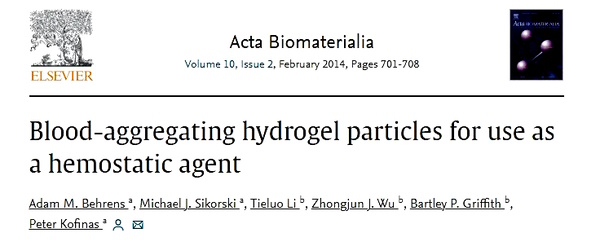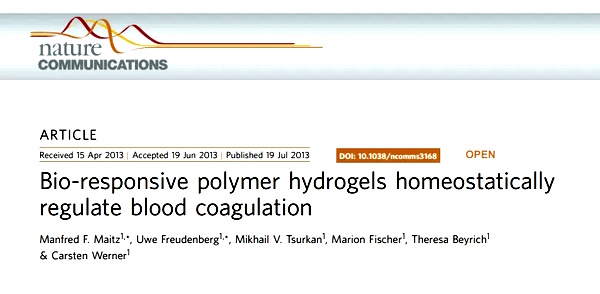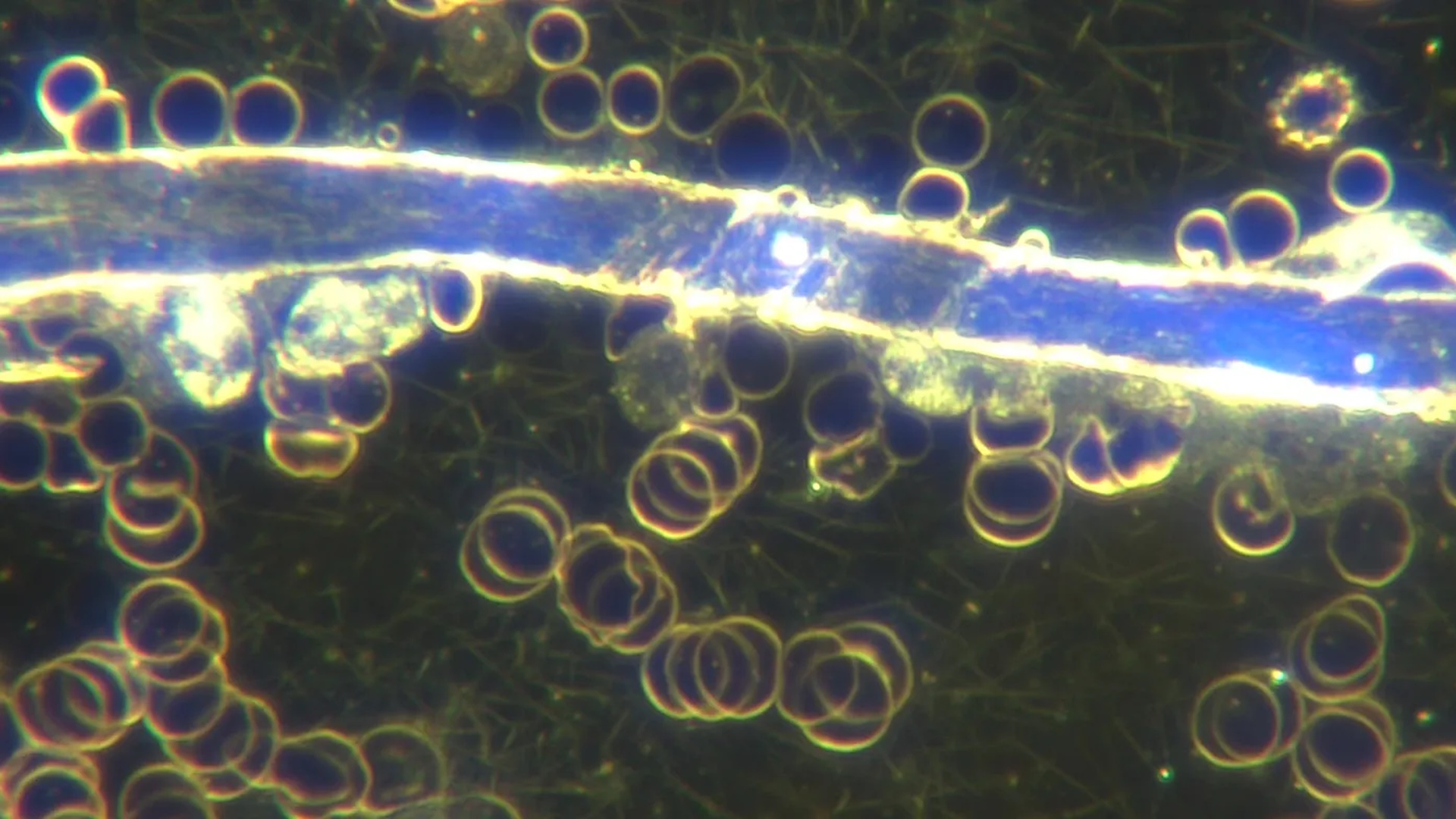
Hydrogel Coagulates Blood and Causes Blood Clots
by Ana Maria Mihalcea, MD, PhD, Dr. Ana’s Newsletter
February 10, 2023

Many people do not see a problem using Hydrogels in injectable medications and C19 shots. Hydrogel is the technological platform to the transhumanist agenda, as it can create technological interfaces, mimic any tissue.
https://anamihalceamdphd.substack.com/p/how-to-create-self-assembled-nanocircuits
People are completely surprised that C19 injected people are experiencing blood clotting problems. In my view, unvaccinated people are not concerned enough about the fact that their D-Dimers are also increasing, indicating micro clotting. We have been speaking about the fact that vaccinated and unvaccinated blood looks the same now, with what is believed to be Hydrogel/ Graphene Ribbons. Dr. David Nixon showed these Ribbons to develop from the C19 Pfizer vial contents, and they seem to be the optical communications system between the microchips that unfold and enfold from the quantum field.
These same Hydrogel/ Graphene Ribbons are seen in live blood with clearly visible micro clotting. Some people have elevated D-Dimers, however the micro clotting is visible under Darkfield Microscopy prior to manifesting an abnormal D-Dimer test.
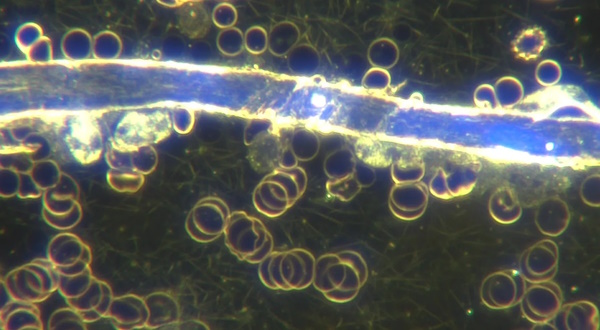
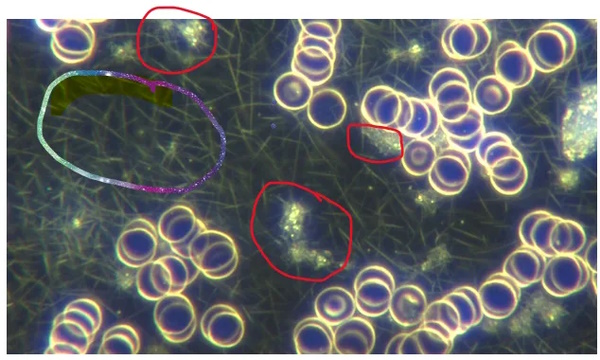
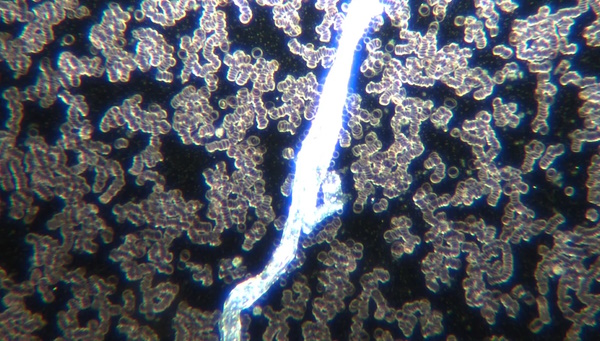
Hydrogel has long been used to stop bleeding and increase blood clotting.
The body is unable to control massive blood loss without treatment. Available hemostatic agents are often expensive, ineffective or raise safety concerns. Synthetic hydrogel particles are an inexpensive and promising alternative. In this study we synthesized and characterized N-(3-aminopropyl)methacrylamide (APM) hydrogel particles and investigated their use as a hemostatic material. The APM hydrogel particles were synthesized via inverse suspension polymerization with a narrow size distribution and rapid swelling behavior. In vitro coagulation studies showed hydrogel particle blood aggregate formation as well as bulk blood coagulation inhibition. In vivo studies using multiple rat injury and ovine liver laceration models demonstrated the particles’ ability to aid in rapid hemostasis. Subsequent hematoxylin and eosin and Carstairs’ method staining of the ovine liver incision sites showed significant hemostatic plug formation. This study suggests that these cationic hydrogel particles form a physical barrier to blood loss by forming aggregates, while causing a general decrease in coagulation activity in the bulk. The formation of a rapid sealant through aggregation and the promotion of local hemostasis through electrostatic interactions are coupled with a decrease in overall coagulation activity. These interactions require the interplay of a variety of mechanisms stemming from a simple synthetic platform.
Here is the link:
Blood-aggregating hydrogel particles for use as a hemostatic agent
The exact opposite, creating blood thinning, has also been done with Hydrogel. Any part of the blood clotting mechanism can be controlled via Hydrogel:
Bio-responsive polymer architectures can empower medical therapies by engaging molecular feedback-response mechanisms resembling the homeostatic adaptation of living tissues to varying environmental constraints. Here we show that a blood coagulation-responsive hydrogel system can deliver heparin in amounts triggered by the environmental levels of thrombin, the key enzyme of the coagulation cascade, which–in turn–becomes inactivated due to released heparin. The bio-responsive hydrogel quantitatively quenches blood coagulation over several hours in the presence of pro-coagulant stimuli and during repeated incubation with fresh, non-anticoagulated blood. These features enable the introduced material to provide sustainable, autoregulated anticoagulation, addressing a key challenge of many medical therapies. Beyond that, the explored concept may facilitate the development of materials that allow the effective and controlled application of drugs and biomolecules.
Hydrogels that are used to stop bleeding have tremendous mechanical resistance capability. For example, for surgical repair it can withstand a pressure of 290mmHg ( I have never seen a human with such a blood pressure) .
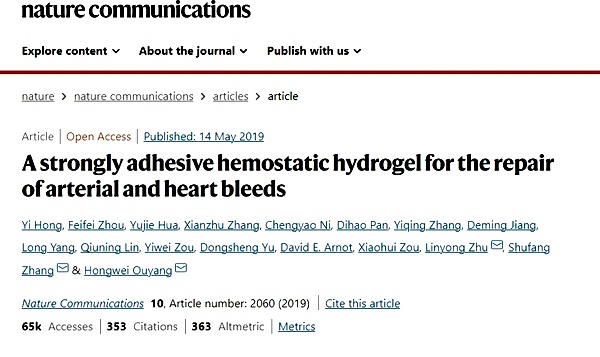
Uncontrollable bleeding is a major problem in surgical procedures and after major trauma. Existing hemostatic agents poorly control hemorrhaging from traumatic arterial and cardiac wounds because of their weak adhesion to wet and mobile tissues. Here we design a photoreactive adhesive that mimics the extracellular matrix (ECM) composition. This biomacromolecule-based matrix hydrogel can undergo rapid gelling and fixation to adhere and seal bleeding arteries and cardiac walls after UV light irradiation. These repairs can withstand up to 290 mm Hg blood pressure, significantly higher than blood pressures in most clinical settings (systolic BP 60–160 mm Hg). Most importantly, the hydrogel can stop highpressure bleeding from pig carotid arteries with 4~ 5 mm-long incision wounds and from pig hearts with 6 mm diameter cardiac penetration holes. Treated pigs survived after hemostatic treatments with this hydrogel, which is well-tolerated and appears to offer significant clinical advantage as a traumatic wound sealant.
We all know that the Hydrogel in the C19 shots is Polyethylene Glycol. It is quite effective in clotting the blood.
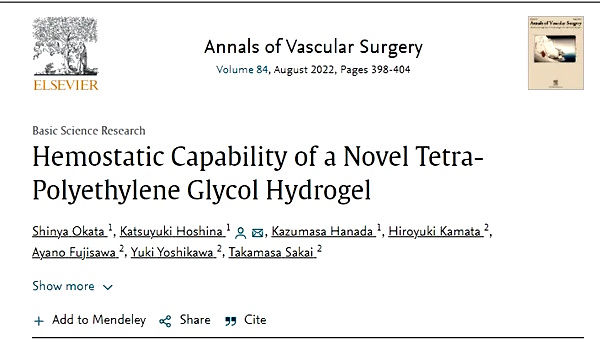
TetraStat is a tetra-armed polyethylene glycol (PEG) hydrogel. It is a synthetic sealant that solidifies instantly in response to pH changes. This study aimed to evaluate the hemostatic effect of TetraStat through experiments evaluating future clinical applications.
We used TetraStat, oxidized regenerated cellulose (SURGICEL®), and fibrinogen and thrombin sealant patch (TachoSil®) using in vitro and in vivo experiments. For the in vitro experiment, a closed circulatory system filled with phosphate-buffered saline under high pressure was used. Needle punctures were created and closed using the various sealants. For the in vivo experiment, rat venae cavae were punctured with 18- and 20-gauge (G) needles, and hemorrhage was allowed to occur for several seconds. A porous PEG sponge soaked with TetraStat was applied as a hemostatic system. Hemostasis outcomes were compared among the various concentrations (40–100 g/L) of TetraStat, SURGICEL, and TachoSil.
The punctured holes in the prosthetic graft were successfully sealed with TetraStat in 1 min. The success rate of hemostasis with TetraStat for the punctured holes in the rat vena cava was dose-dependent. TetraStat was effective in sealing the holes created with a 20 G needle at all concentrations; however, the holes created with an 18 G needle could be sealed only when the concentration ≥60 g/L. Hemostasis using SURGICEL or TachoSil was less successful and sometimes required up to 5 min.
Even for those who believe that the spike protein is the cause of the blood clots, I have not yet heard a good explanation to the fact that the spike protein sequence encodes for the pH dependent production of Hydrogel. At the body’s pH of 7 Hydrogel is produced, not Amyloid.
https://anamihalceamdphd.substack.com/p/amyloid-and-hydrogel-formation-of
I wrote in my commentary about the “ Died Suddenly” Documentary that the clots found by the embalmers sure look like Hydrogel, and Mike Adams findings of self assembly polymer with metals makes this also very reasonable.
https://anamihalceamdphd.substack.com/p/thoughts-and-comments-about-died
Unfortunately we were not able to find anyone to analyze these clots from an unvaccinated individual, but given that the Hydrogel/ Graphene structures are in unvaccinated blood as well now, it seems prudent to investigate this correlation further.
https://anamihalceamdphd.substack.com/p/huge-rubbery-blood-clots-in-an-unvaccinated
When I saw this finding in the sky over Turkey where the massive Earth Quake happened – incidentally while square HAARP clouds were over the area – it made me think of omens for humanity in the sky. It looks like a deformed red blood cell to me, not a UFO. It made me wonder, if the cause of end of the human species was written prophetically in the heavens. In my view, the answer to unfolding human depopulation phenomenon is in the live blood. All are affected now, thanks to self spreading vaccines, environmental poisoning and all experience silent accelerated aging, both vaccinated and unvaccinated.

Connect with Dr. Ana Maria Mihalcea

Truth Comes to Light highlights writers and video creators who ask the difficult questions while sharing their unique insights and visions.
Everything posted on this site is done in the spirit of conversation. Please do your own research and trust yourself when reading and giving consideration to anything that appears here or anywhere else.

